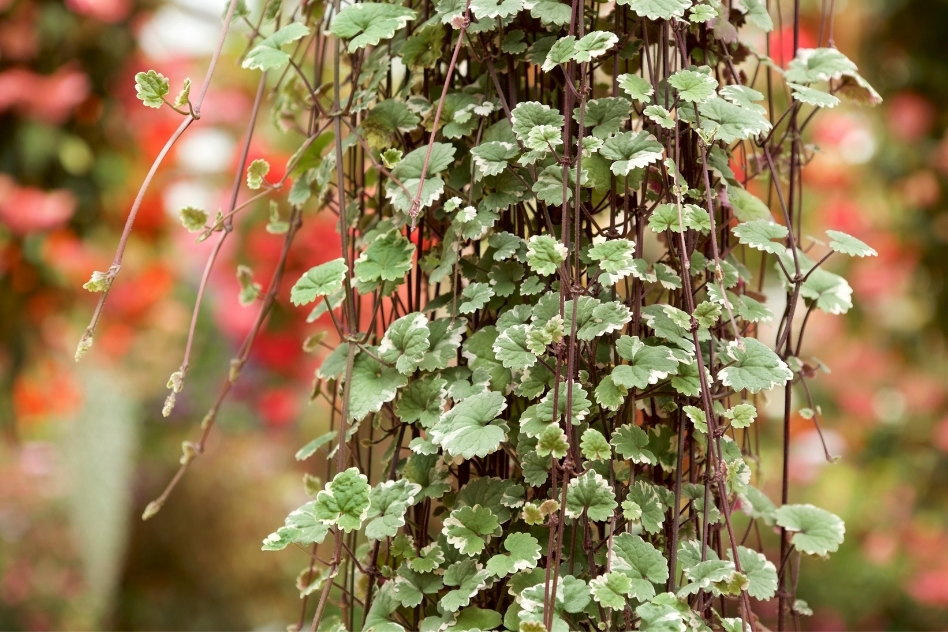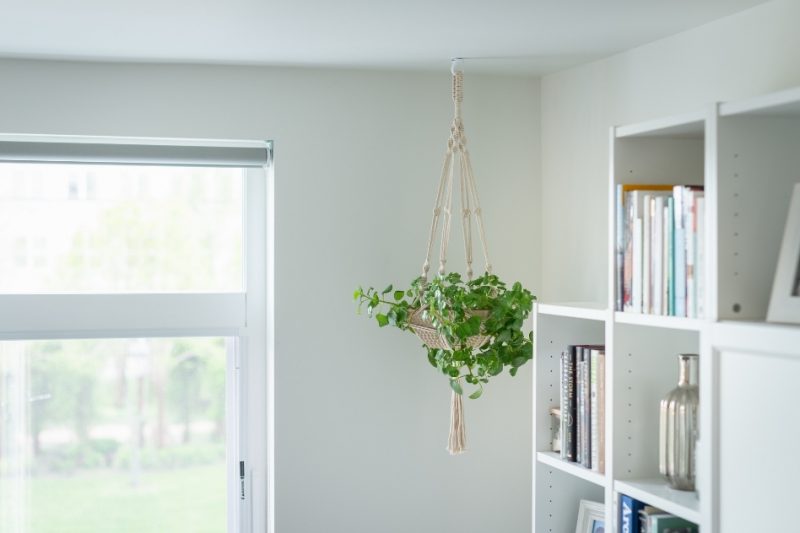The Turtles String is an amazing and gorgeous houseplant that is one of the easiest to care for. They are quite small, making them the perfect desk plant.
It reaches anywhere from one-inch to four-inches tall. But they are also delicate and can be damaged easily so you need to keep them in a spot where they will not be touched.
This Turtles String plant care guide will walk you through several steps required to take care of this plant.
Turtles String Watering Guide
The Turtles String isn’t exactly a succulent plant so it doesn’t have to be watered as often as other houseplants.
In fact, overwatering this plant is dangerous. Its root system rots easily so over-saturating it with water will lead to rotting. It’s healthier to underwater this plant than it is to overwater it.
The top of the soil should be completely dry before watering. Also you will find that the Turtles String requires even less watering during the winter months.
Soil and Potting Guide
Peat-based soil is going to be your best bet because it drains much better than other types. Other types of potting soil will work as long as it allows for quick draining.
Also one of the other factors that makes the Turtles String so easy to maintain is that you won’t need to repot it very often since its root system is so small. It’s a good practice to change out the soil at least once per year though.
If the plant happens to outgrow the pot, then transplant it when changing the soil. The best time to do this is during spring.
Finally, shallow pots are the best friend of the Turtles String since it’s more difficult to overwater it. I cannot express the importance of not overwatering this plant!
Light Guide for the Turtles String
Turtles String loves bright and direct sunlight in limited doses, but you need to be sure it’s not exposed for longer than two hours.
Anything over that can be harmful. However, since this will likely be a desk or shelf plant, this shouldn’t ever be an issue.
The amount of sunlight that you allow this plant to absorb is also dependent on the color of its leaves. The darker the leaves, the less direct sunlight the plant can tolerate.
With that said, two hours of direct, bright light will allow the Turtles String to thrive. It’s also worth noting that indoor lights are also enough to allow this plant to be healthy. Again, this makes it an amazing choice for an office or study.

Proper Fertilization Tips
Only fertilize the Turtles String during spring and summer months. Use liquid feeders that have been diluted once or twice a month.
Do not over-feed this plant because you will cause severe damage to its roots.
Peperomia Prostrata Propagation Facts
Turtles String is an easy houseplant to propagate and you’ll be able to transplant cuttings with relatively little risk.
Just plant a cutting of the stem and then watch the roots grow through the soil.
You can also place that cutting into a jug of water and then plant it once you see root growth begins.
Turtles String Humidity Requirement
This Turtles String plant care guide moves onto humidity, which is an important factor to this plant’s health. It prefers a humid environment.
Since you probably won’t be filling your desk with small plants, you’ll have to lightly mist it once a day. Just use a spray bottle and lightly spray the leaves every morning.
Please note that if you live in a naturally humid area, then you won’t need to mist the leaves.
Turtles String Pet Care
First of all, the Turtles String is toxic to cats and we all know just how mischievous cats can be. They have the habit of messing with anything that’s new.
If they ingest leaves from this plant, they will become irritated, vomit, and get diarrhea.
Placing it on your desk has a lower chance of pets being curious but if you think there is a risk, it’s best to not own the Turtles String.

Peperomia Prostrata Turtles String Pest and Disease Guide
Like most houseplants, the Turtles String is susceptible to a number of problems, most of which are due to improper care.
The first sign of infestation will show up as white fuzz at the bottom of the leaves. It is commonly mistaken for fungus.
With that said, here are some tips to preventing and removing pests from the Turtles String.
The most important step is to follow through and get all of the basic essential things right. Don’t overwater the plant and make sure it’s growing in the right soil. Those two tips will prevent most pest and disease issues.
You need to keep the Turtles String groomed properly. That includes removing dead leaves and flowers. Also, when repotting yearly, make sure you check the roots for bugs.
Finally, when you bring home a new plant, keep it away from the others for a few days. Pests will spread quickly and relentlessly.
If your plant has been infested with pests, here are some methods of removing them.
- Wash the bugs away with water. Use the faucet or some other strong stream to remove them.
- If the infestation is severe, then you might need to give the plant a bath. That requires you to remove it from the pot, wash it all over, and then examine it closely before repotting it. Furthermore, use fresh soil and a new pot.
- Use a delicate cloth to remove individual pests from the plant.
Avoid Root Rot
Root rot is generally caused from soggy soil. If it’s left untreated, the rot will cause the leaves to start losing their color. Eventually, it will die.
As you can see, this is a severe problem and must be addressed immediately. Prevention is the best cure so as long as you don’t overwater the plant or let it sit in soggy soil, then it won’t be an issue.
However, if the plant does start showing signs of root rot, it’s absolutely essential that you address it immediately. The treatment is to dry the soil and then remove the plant for inspection.
Transfer it to a new pot with fresh soil. Then don’t water the plant for about 3 days. Keep a close eye on it to see if the discoloration clears up.
Summary of Turtles String Plant Care Tips
- The Turtles String has delicate leaves so you will need to take extra care when handling the plant. If not, you risk the leaves falling away from the plant.
- Only repot this plant during spring unless you have no choice.
- During winter, make sure that the location of the plant is getting at least two hours of sunlight.
- Only attempt to propagate the Turtles String during spring or summer.
- If the plant gets infested by pests, take it outside immediately so that you don’t contaminate your other plants.
At the end of the day, this is one of the easier plants to take care of as long as you follow the basics.






Leave a reply